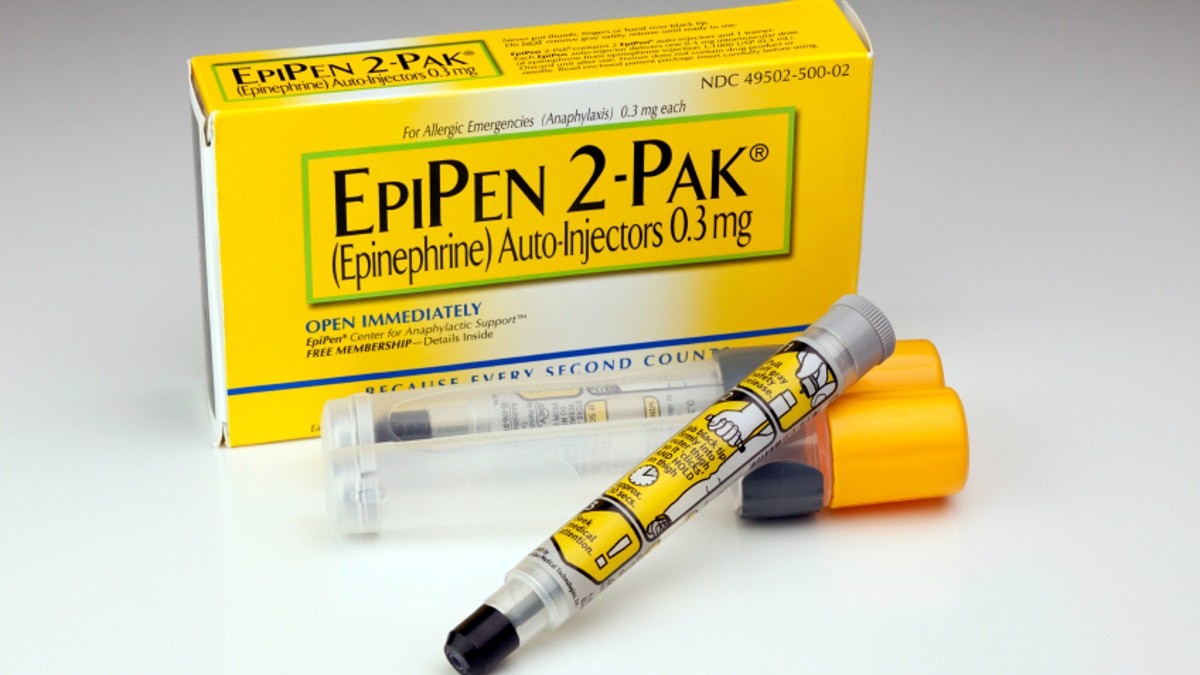
Squirming kids may be badly hurt by the needles of epinephrine injectors like EpiPens, according to a set of case studies collected by U.S. doctors.
"Young children typically don't have the cognitive ability to hold still 'for their own good'," said lead author Dr. Julie Brown, an emergency physician at Seattle Children's Hospital, who noted that injuries typically happen when children move during the injection.
Brown and her coauthors emphasize that the risk of injury should not prevent parents and other caregivers from using EpiPens in cases of severe allergic reaction, as they may be life saving. However, parents should restrain the child and may not need to keep the needle in place for a full 10 seconds.
EpiPens work by injecting epinephrine into a person's thigh at the first signs of a severe allergic reaction. The drug can prevent the potentially life-threatening effects of extreme allergic reactions, including lack of oxygen or shock to the heart.
Severe allergic reactions are a growing problem and the number of deaths each year from allergic reactions is on the rise, the study team writes in Annals of Emergency Medicine.
Brown decided to investigate injector injuries after she saw an EpiPen-related injury in one of her own patients. "I was surprised by size and depth of his wounds, and wondered how an EpiPen Jr device could have caused these injuries," she told Reuters Health.
Brown videotaped an experiment to see how quickly the medication was released from these devices and observed that it was expelled in less than a second. Previous studies have suggested the medication is released in less than 3 seconds from injectors, she noted.
To see how common injector injuries are, the research team asked participants in online emergency medicine discussion groups and Facebook allergy groups in North America.
The researchers included 22 cases in their study, all injuries from EpiPen or EpiPen Jr. devices. The injured children were between the ages of 1 and 11 years old and the average age was four and a half years.
The majority of the injections, 12, were given by parents, while six were administered by healthcare providers and three were done by teachers. Only one was done by the child.
In 17 cases, children had deep gashes from the needle, while in four cases the needle got stuck in the child's leg. In one case, a needle cut a nurse's finger.
In three of the cases, the person giving the injection reinserted the needle because it was knocked out before 10 seconds had gone by, causing a second injury.
Although many of the cases from this study resulted in severe cuts requiring stitches, Brown noted that EpiPen injuries may not be very common. "It is difficult to say for sure, but these injuries are probably fairly uncommon relative to how frequently Epipens are used," she said.
Dr. Ronna Campbell, who was not involved in the study, also thinks such injuries are likely rare. "In over 10 years of practicing emergency medicine I have never seen nor heard of a laceration secondary to an epinephrine autoinjector," she said.
The researchers recommend that in cases of allergic reaction, the EpiPen needle should be inserted for as short a time as possible, the needle should never be reinserted and the child's leg should be immobilized.
Brown also advised parents to think about and practice how they will hold their child to reduce injury from EpiPens.
"The benefits of the medication far outweigh the risk of injury. Careful administration and leg immobilization are likely to help reduce the risk of injury," Campbell said by email.
"It is important to realize that epinephrine autoinjectors are used safely every day, and save lives every day," Brown added.
